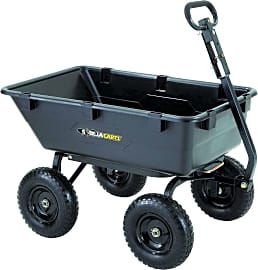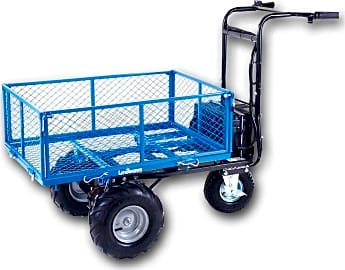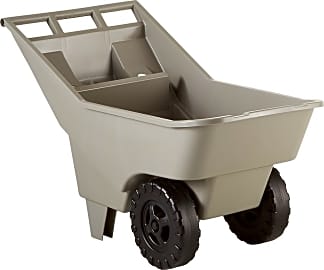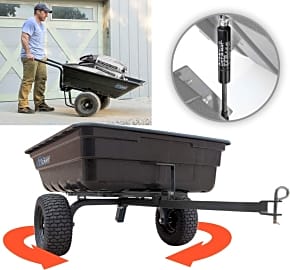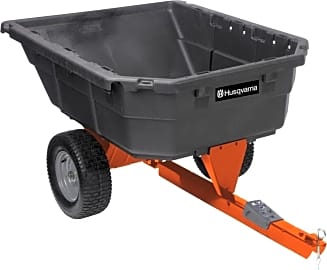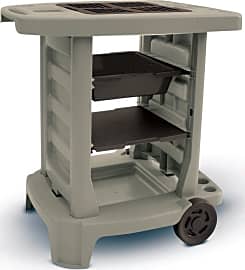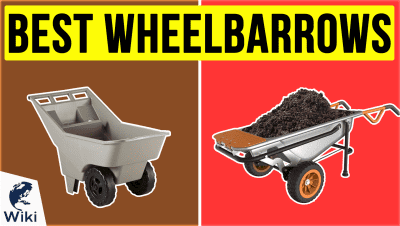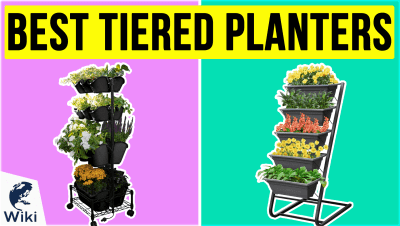The 10 Best Lawn Carts

This wiki has been updated 43 times since it was first published in July of 2015. If you need an efficient way to transport and dump leaves, mulch, and other heavy items around your property, try one of these handy yard carts, which can take the strain out of backbreaking garden work. We've included battery-powered and hydraulic-assisted models as well as wagon-style options with convertible designs that connect to all-terrain vehicles and lawn tractors. When users buy our independently chosen editorial recommendations, we may earn commissions to help fund the Wiki.
Editor's Notes
March 26, 2020:
If you've already invested in a good mulcher, you're now going to need an additional piece of equipment to cart that debris around to various part of your garden. These lawn carts don't have to be boring or one-dimensional in terms of their functionality, though. We've done our best to provide a variety of versatile options that can be used for toting anything from seedlings and mulch to cement and even toys if you're traveling to the beach with the kids.
We've added both the battery-powered Greenworks GC40L410, which runs for up to 40 minutes when fully charged, and the Oxcart Lift Assist, which leverages hydraulics to minimize back strain. Both of these options are ideal for hauling heavy items like cement and wood, the latter of which has a pin-hole hitch for quick connection to a tractor or ATV, depending on your needs. Also newly added is the Landworks Utility Wagon, complete with a brushless electric motor and handle-mounted accelerator thumb pedal for extra control over its speed. While I wouldn't recommend using it (or any lawn cart for that matter) in a race, power-assisted models like this are helpful if you're retired and have difficulty moving classic wheelbarrows and other heavy objects around your home. The cargo panels on this particular model can be folded down or removed entirely, so you can use the cart as a flatbed to transport bulky garden ornaments and other heavy objects.
Another consideration to keep in mind is how well these carts maneuver over various types of terrain. The Gorilla Carts Poly uses four 13-inch tires to roll effortlessly on most outdoor surfaces, while the extra-thick wheels on the Timber Ridge Wagon can withstand high-impact gardening projects.
Since both hauling and dumping capacities are prime concerns in the garden, we wanted to make sure we included an option like the Husqvarna Swivel due to its sloped end, structural polyethylene foam bed for smooth loading and unloading, and step-on pedal for easy rotation.
Finally, although the Suncast Gardening Center may be a bit of a chore to tote around because of its height, there's still something to be said about having what I like to call a "garden tool hub" with the capacity for storing whatever tools you need, regardless of the outdoor task at hand. Its interchangeable shelves are also a convenient feature.
Putting The Cart Before The Wheelbarrow
Like wheelbarrows, carts come in varying levels of quality, durability, and sturdiness.
Your method of transporting materials is a fundamental aspect of many gardening and do-it-yourself landscaping projects. If you’re like me, you grew up pushing around an old-fashioned wheelbarrow as you assisted the family with yard work and outdoor chores. Looking back, a quality lawn cart would have served as a superior transport device for a lot of those chores — if only I’d had one at my disposal.
I’m not alleging that straining to push a wheelbarrow uphill over uneven terrain dotted with gnarled tree roots and dead shrubs was without its benefits; the process was certainly a character-builder, as my father would say. By balancing a load of heavy brush on one wheel as the the bumpy ground jostled it in myriad directions, I developed focus and strength. On the other hand, a lawn cart would have provided much more stability, saving time and energy spent on the inevitable capsizing incidents that took place from time to time.
Like wheelbarrows, carts come in varying levels of quality, durability, and sturdiness. Whereas wheelbarrows have one wheel and two long handles, carts typically feature two, three, or four wheels. Some carts have straight sides, while others assume a more sloping, curved design, similar to that of a wheelbarrow. This is helpful when the task requires frequent dumping.
While not ideal for maneuvering in tight spaces and doing a lot of stopping, starting, and pivoting, a lawn cart can offer plenty of convenience and flexibility if you have ample space and a relatively smooth surface to work with. Large carts will handle heavier, bulkier loads than a standard wheelbarrow.
Because of the difference in designs and their various strengths and weaknesses, many people will find they have a need for both tools. When you do conclude that you’d like to add a new lawn cart to your arsenal of home and garden maintenance gear, make sure to assess the design elements and functionality of potential options before making a decision.
Selecting Your Backyard Buddy
Unlike the wheelbarrow and its timeless, traditional design, the lawn cart comes in a variety of styles. Numerous considerations — such as who will be using it, how they’ll be using it, and the types of loads it will carry — will factor into your choice.
When you first think of a lawn cart, the initial image that comes to mind is likely that of the standard utility wagon. Usually constructed with four straight sides, this model is the optimal choice for hauling materials like soil, plants, fertilizer, wood chips, or gravel. For added versatility in handling large, awkward loads, go with a cart that has removable sides.
The dump cart looks very similar to the utility wagon, but it has the ability to dump. Some of these are designed with only two wheels, which makes them appear closer to a wheelbarrow than a standard cart.
Unlike the wheelbarrow and its timeless, traditional design, the lawn cart comes in a variety of styles.
While the flatbed cart functions similarly to a utility wagon, it doesn’t have sides. This works well for transporting bulky, unwieldy items, such as tree limbs or garden planters. The smallest and least heavy-duty of the bunch, foldable carts usually feature an accordion metal frame that allows them to collapse for storage when you’re finished using them.
When it comes to capacity, you’ll want to look at both weight and volume. Consider the size of your lawn and the density of the materials you’ll be hauling. If you’ll be working with a lot of weight, you’ll need a heavy-duty cart with thick, tall sides to reliably contain the load.
The expected weight capacity will affect the type of tires you select. Not only do pneumatic rubber tires make the cart more comfortable to push and pull, they’re resilient and effective in absorbing shock when rolling over rough terrain as well. For light garden work and simple backyard chores, plastic tires will usually suffice.
The construction of the bed is critical — the more intense the application, the more rigidity, thickness, and sturdiness you’ll need from this platform. While steel beds are the strongest, polyethylene is a less expensive material that won’t scratch or rust as easily. Plastic beds are lighter, but not as durable. Wood can withstand a beating, but may warp if left out in the elements.
The strength of the user is also key; if you’re not physically capable of hauling it, the cart is useless. Anyone who has trouble walking, lifting, or bending over should consider something on the lighter side.
Some carts come with specialized features, such a brakes, fold-out trays, and tool racks. Brakes are useful, especially if you’ll be traversing hills, and the additional trays and racks come in handy for in-depth gardening and landscaping work.
The Workhorse
He may not make the All-Star team or win any individual awards, but the utility player on your baseball team who can suit up at all four infield positions and even take the mound is the most valuable asset on your squad. A quality lawn cart is your household utility player, without the ego or exorbitant salary.
You can use the bed to mix soil and mulch, and as long as there’s an easy dump mechanism, it’s simple to unload waste into the compost pile.
It really is a gardener’s best friend. From potting plants to transferring seeds and hauling heavy garden ornaments, there’s not much it can’t help you with. You can use the bed to mix soil and mulch, and as long as there’s an easy dump mechanism, it’s simple to unload waste into the compost pile.
When brush pickup day rolls around, won’t it be nice to drag a horde of limbs and branches out to the street in a cart versus playing pick-up-sticks and suffering the cuts, scrapes, and fatigue that result from carrying them manually? The same goes for hauling lumber, bricks, or gravel for a home renovation project — a cart makes it exponentially easier on your back, your arms, and your psyche.
Even for work as vigorous as mixing and pouring concrete, a thick metal cart can prove invaluable. Instead of mixing the solution in a five-gallon bucket to carry around, you can mix it together directly in the bed of the cart, then gently pull it from place to place as you lay concrete for a new sidewalk or patio.


